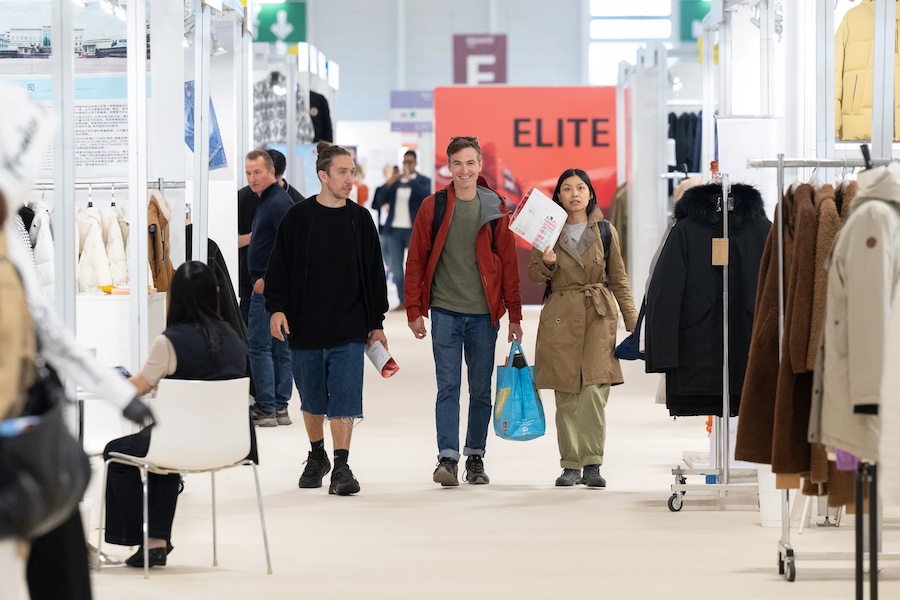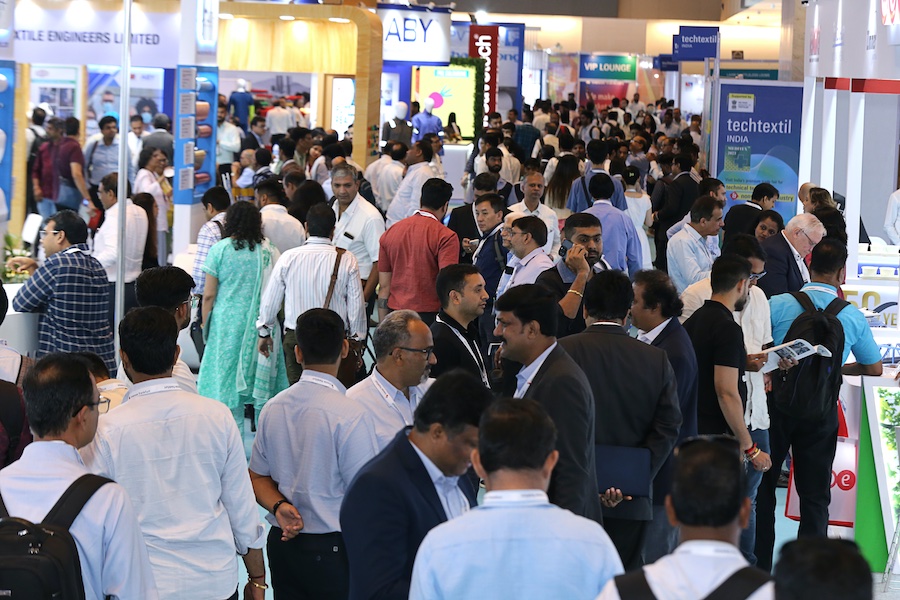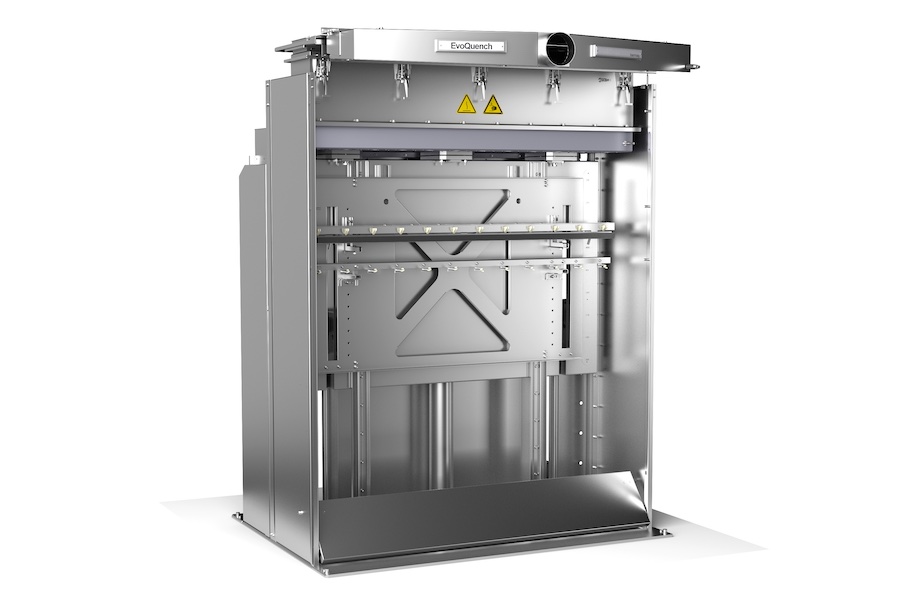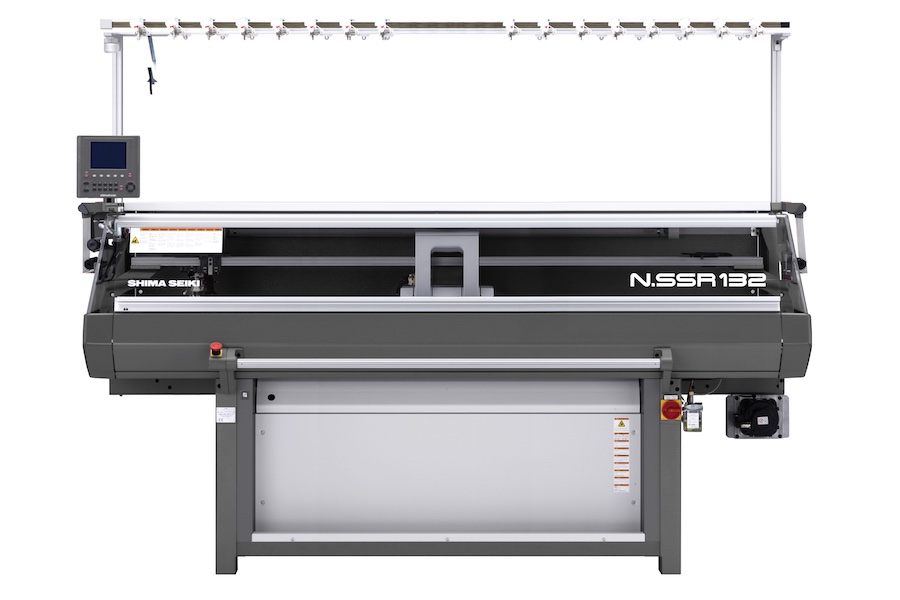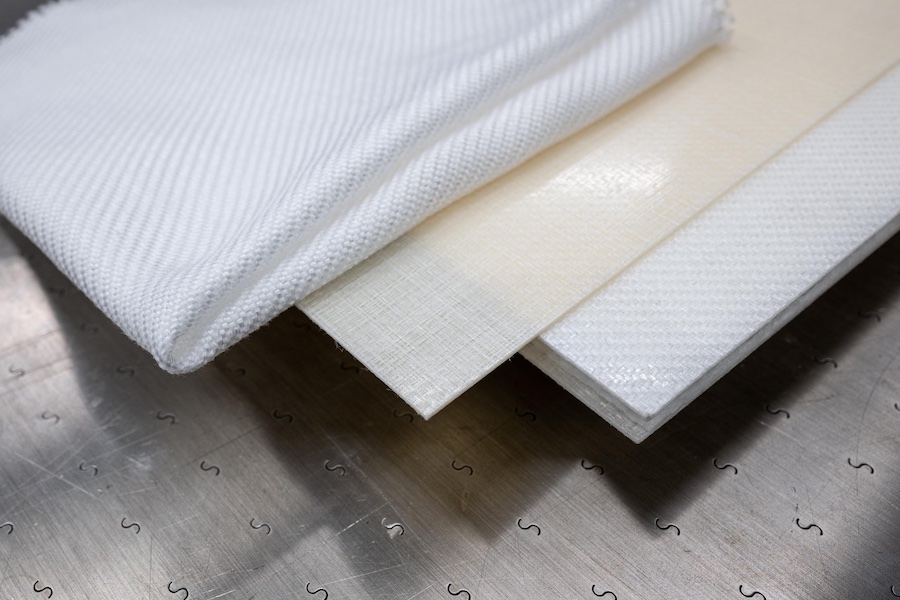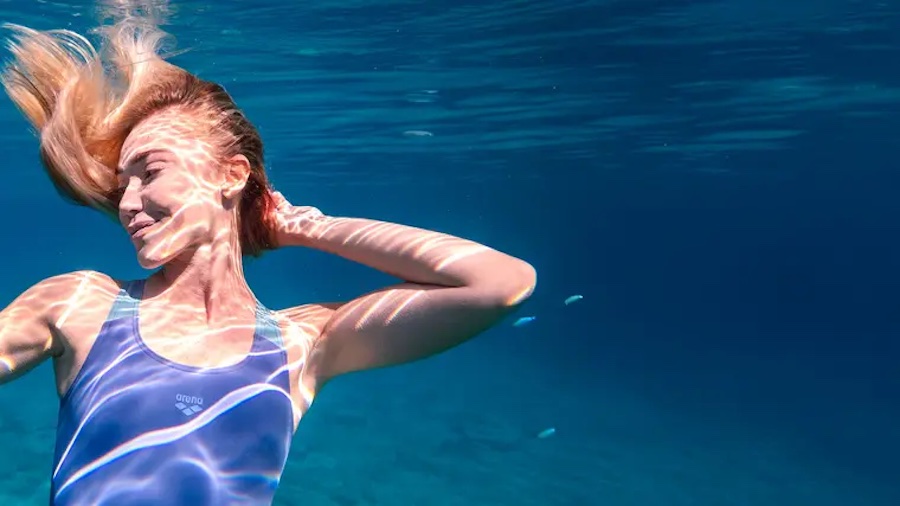#Techtextil 2017
Techtextil sets new visitor and exhibitor records
User fair for high-tech textiles
Special ‘Living in Space’ exhibition a hit with visitors and exhibitors

A new record was also set on the exhibitor side with 1,477 companies from 55 countries taking part in the two fairs (2015: 1,393 from 52 countries).
“At Techtextil and Texprocess, the technical-textile industry gave an impressive demonstration of its great innovativeness and preparedness to meet tomorrow’s challenges. This is where car makers meet fashion designers and medical engineers meet industrial specialists. Techtextil is unrivalled thanks to the broad spectrum of textile materials and technologies to be seen. Around 60 percent of trade visitors are managers; 57 percent play a decisive role in their company’s decisions when it comes to purchasing new materials”, said Detlef Braun, Member of the Executive Board of Messe Frankfurt.
High degree of internationality and positive mood in the sector
Around 20,800 Techtextil visitors (62 percent, 2015: 61 percent) came from outside Germany. The five leading visitor nations at Techtextil after Germany were Italy, France, Turkey, United Kingdom and Belgium. A very good mood among trade visitors was revealed by the visitor poll on the economic outlook. At Techtextil, 40 percent of visitors (2015: 32 percent) said they considered the current economic situation to be good. The figure for German visitors alone was 55 percent. “You notice that there is a good climate of investment in Europe. People want to get things done. We had lots of visitors to our stand, mainly Europeans and Americans. There were also more Russian visitors than anticipated”, said Jutta Stehr, Senior Marketing Manager, Trützschler Nonwovens & Man-Made Fibers.
With 423 exhibitors from Germany and 1,054 from abroad, the level of internationality on the exhibitor side reached 71 percent with Lebanon, Mexico and Vietnam being represented for the first time. 14 countries were represented by national pavilions – Belgium, China, France, the United Kingdom, Italy, Canada, Croatia, Portugal, South Korea, Switzerland, Taiwan, the Czech Republic, Turkey and the USA. There was a significant increase in the number of European exhibitors, especially from Spain, Poland, Italy, the Netherlands and Turkey, as well as from China and India. The mood among exhibitors was also good with 43 percent (2015: 35 percent) of all Techtextil exhibitors rating the sector’s economic climate as being ‘good’. Among the German exhibitors, the figure was even higher: 65 percent (2015: 54 percent).
Techtextil and Texprocess: a perfect combination
The concurrent Texprocess, Leading International Trade Fair for Processing Textile and Flexible Materials, attracted 312 exhibitors from 35 countries and 13,718 visitors from 109 countries. Additionally, 11,399 Techtextil visitors (2015: 7,600) also checked out the products and services to be seen at Texprocess. 7,091 Texprocess visitors (2015: 5,500) also looked in at Techtextil. Together, the two fairs welcomed a total of 1,789 exhibitors from 66 countries (2015: 1,662 from 54 countries) and over 47,500 visitors from 114 countries (up around 14 percent, 2015: around 42,000 from 116 countries).
Techtextil: interdisciplinary and user oriented
As always, Techtextil presented the complete spectrum of technical textiles and nonwovens for all areas of application, making it one of the most relevant user-fairs for textile innovations. “Nowadays, people come here with clear ideas of what they want. They know that, at the fair, they will find the link between technology and materials for their various areas of application and that everything is here, from nonwovens, via woven textile fabrics, to machinery”, said Dr Ulrich Hornfeck, Board Member & Chief Commercial Officer of nonwovens manufacturer Sandler. Hans U. Kohn, Chief Operating Officer of Schoeller Technologies confirmed that, “The spectrum of visitors was extremely broad and varied: we not only welcomed representatives of protective-clothing companies, but also visitors from the automobile sector and the technical-applications segment.”
The largest exhibitor groups comprised companies with products for applications in the industry (762), the automobile and aerospace industries (673), architecture and construction (559) and occupational safety (488). The highest rates of growth were recorded by the industry (+73), sport (+57), mobility (+55) and apparel (+49) segments.
Buildtech and Hometech: textiles in architecture and construction
From textile-reinforced concrete, via woven fabrics for lightweight constructions, to functionalised textiles: at Techtextil, architects, property developers, engineers and planners were confronted by a wide range of fibre-based materials shown by around 560 exhibitors in the Buildtech area of application.

One of these exhibitors was Verseidag from Krefeld, the supplier of the glass-fibre fabric for the outer shell of the Thyssen Krupp lift test tower in Rottweil – the world’s highest membrane product. The Institute for Textile Machines and Textile High Performance Materials (ITM) of Dresden Technical University presented carbon-reinforced concrete with integrated sensors for monitoring the technical condition of structures. Another exhibitor, solidian from the South German town of Albstadt, also presented glass and carbon reinforcement that, inter alia, is to be found in the Yavuz Sultan Selim bridge near Istanbul.
The award-winning designs of the ‘Textile Structures for New Building’ student competition offered insights into the work of tomorrow’s architects and designers. A get-together with renowned architect Ben van Berkel, the designer of the ‘Space Habitat’ at the ‘Living in Space’ special exhibition, offered an additional opportunity to exchange ideas and opinions.
Medtech: focusing on health
In the Medtech area of application, around 420 exhibitors presented textile solutions for the field of medical technology, from anti-bacterial wound dressings, via fibre-based implants, to sensor textiles for monitoring vital functions. One of the award-winning projects of the Techtextil Innovation Award came from the Medtech field. The Centexbel non-profit Organisation (Belgium) has developed an intelligent knee bandage that helps patients recovering from knee operations. A textile sensor identifies the angle of the patient’s knee and transmits this information together with personalised exercises immediately to the patient via an app.
Mobiltech: fibres for mobility

“Fibre-based materials play a role in the automobile industry especially when it comes to reducing weight”, said Hans-Bernd Lüchtefeld, the member of staff responsible for communication at PHP Fibers. According to the Association of the Finishing, Yarns, Woven Fabrics and Technical Textiles Industry (IVGT), there are, statistically speaking, over 40 fibre-based elements in every modern car. They include seat covers, headliners and seat belts, as well as filters, hoses, airbags, instrument panels and components made of fibre-reinforced plastic. PHP Fibers, which recently opened a weaving and finishing plant for airbag fabrics near Aschaffenburg, presented a new kind of material study in the form of a bicycle with an integrated composite frame made of polyamide and glass fibre, as well as special tyres from Continental and a drive-belt instead of a chain.
A total of around 670 exhibitors showed products for cars and trucks, as well as emergency and security vehicles, and aerospace applications. They included the South German textile supplier, Rökona, which specialises in the production of knitted fabrics, dyes and finishing for OEMs and automobile suppliers.
The company presented a new shade solution for panorama roofs in cars. Also from the south of Germany, yarn manufacturer Zimmermann showed a carbon yarn at the ‘Living in Space’ exhibition, which was used by Augsburg-based MT Aerospace to make fairings for the solid-fuel booster rocket of the Ariane 6.
Clothtech and Sporttech: Materials and machines for tomorrow’s fashions
“Fabrics, machinery and coatings - Techtextil is a mecca for materials and a great source of inspiration”, said designer and dressmaker Sena Isikal. Together with Leyla Yalcin, she created fashions inspired by space travel, which were to be seen at the ‘Living in Space’ exhibition.

Altogether, around 880 Techtextil exhibitors offered new materials, coatings, (supplementary) functions and machines for the Clothtech and Sporttech sections and thus gave designers, garment manufacturers and developers a broad thematic choice and the opportunity for an interdisciplinary exchange of ideas and opinions in the fields of fashion, workwear, protective clothing, sportswear and leisure wear. Particular attention was paid to the subjects of smart textiles and sustainability.
This was also confirmed by Techtextil exhibitor Statex from Bremen, a company specialising in the silver coating of fibres, yarns and textile fabrics, especially for technical applications. “Today, our visitors also include designers and garment manufacturers with ‘smart apparel ideas’ relating to textile conductivity, data transfer and visualisation”, says Britta Moritzer, a member of the company’s international sales staff. Another magnet for visitors was the exhibition stand of Switzerland’s Forster Rohner Textile Innovations. The company specialises on the integration of active lighting in textiles at the same time as retaining the textile product’s washing and draping qualities. Among the products to be seen were a white ski jacket with integrated LEDs and a heated leisure jacket, both of which had been made for Bogner.
Sustainability in the apparel sector was also an important subject at the fair. Thus, Freudenberg Performance Materials from the South German town of Weinheim showed a nonwoven substitute for down filling in sport and outdoor jackets. Scientists from the Hohenstein Institutes in Bönnigheim presented the results of their research into the biodegradability of textile products.
Special ‘Living in Space’ exhibition a hit with visitors and exhibitors
Opened by ESA astronaut Dr Reinhold Ewald, the ‘Living in Space’ special exhibition attracted numerous visitors to Hall 6.1 and, therefore, numerous exhibitors for functional garment textiles.

Organised in cooperation with the European Space Agency (ESA) and the German Aerospace Centre (Deutsches Zentrum für Luft- und Raumfahrt – DLR), the exhibition presented textiles and processing technologies in an application-oriented setting.
In a ‘Material Gallery’, Techtextil and Texprocess exhibitors presented materials for use in space travel. The materials to be seen included functional apparel textiles that not only regulate the wearer’s body temperature but also have anti-bacterial and anti-static qualities, as well as flame-resistant textiles, carbon-fibre components for booster rockets, textile transport bags and belts, and sensory yarns that measure and report loads acting on the textile material.
A vision of what building in space could look like in the future was to be seen in the ‘Architecture’ section curated by the Stylepark architecture platform. Architect Ben van Berkel of the international UNStudio firm of architects created a ‘Space Habitat’ especially for Techtextil. The construction work was carried out by lightweight building and large-scale umbrella specialists, MDT-tex. Comprising 60 individual modules, each of which was double twisted and under tension, the lightweight pavilion had an area of 40 square metres and consisted of specially designed aluminium profiles covered with PTFE sheets. MDT-tex designed the fabric especially for the pavilion in an extremely light grammage without sacrificing its high-temperature resistance and technical properties.
In the ‘Clothing’ section, the focus was on functional fashions for space and inspired by space. The ESMOD Fashion School from Berlin presented outfits made by students within the framework of the ‘Couture in Orbit’ project (2015/2016) organised by ESA and the London Science Museum. They included, for example, smart fashion, which transmits the wearer’s vital parameters to a smartphone, a coat for collecting mineral samples and models dealing with the subject of resource scarcity on the earth. Via a video link, the POLI.design centre of the ‘Politecnico di Milano’ university showed outfits from the follow-up project, ‘Fashion in Orbit’ under the scientific supervision of Annalisa Dominoni and the technical supervision of Benedetto Quaquaro in cooperation with ESA and garment manufacturer Colmar.
The Hohenstein Textile Institutes presented two models from the Spacetex research project, within the framework of which astronaut Alexander Gerst tested the interaction of body, apparel and climate under conditions of weightlessness during the ‘Blue Dot’ mission in 2014. In this connection, the model, ‘Nostalgia’ by Linda Pfanzler (Lower Rhine University) reminds the wearer of the earth with an integrated library of fragrances. The suits of the ‘Dynamic Space’ collection by Rachel Kowalski (Pforzheim University) contain electrodes that stimulate important muscle groups to prevent muscle atrophy under conditions of weightlessness.
The outfits shown by Leyla Yalcin and Sena Isikal (AMD Düsseldorf) came from the ‘Lift off’ collection created in cooperation with Bremen-based silver-yarn manufacturer Statex. They include a sleeping bag for astronauts made from silver-coated textiles, which can also be used as an overall and protects the wearer from electro-magnetic radiation. Thanks to the silver threads, another garment, a raincoat reflects light and stores the wearer’s body heat.
Wearing virtual-reality glasses, visitors could also embark on a journey through space to Mars. During the video flight, viewers were shown examples of applications for technical textiles in space travel, e.g., spacer fabrics for plant growing, functional textiles for astronaut apparel, nature-oriented lightweight structures for architecture in space and textile manufacturing technologies for space-travel antennas.
Innovative Apparel Show: the stage for high-tech fashion
The second edition of the Innovative Apparel Show provided a stage on which fashion academies from France, Italy, Portugal and Germany could present creations made of technical textiles using innovative processing technologies. In the two daily live shows, visitors were shown visionary fashion designs for ‘textile effects’, ‘creative engineering’ and ‘smart fashion’. This year, the fashion academies taking part were the Esmod from Paris, the ESAD College of Art and Design from Portugal, the Accademia Italiana, Florence, and Trier University. Julia Gross-Müller of Trier University won first prize of the Innovative Apparel Public Award. Entitled ‘World Folklore’, her model, which combines traditional and innovative processing technologies, was the favourite among visitors. Second place went to Mariana Almeida of ESAD College of Art and Design in Portugal for ‘Momentum’, a smart fashion combination that shows the wearer’s mood. Third place was taken by Eleonara Beni of Accademia Italiana in Florence with an urban-style, multi-functional combination.
As in the past, Techtextil was held concurrently with Texprocess, Leading International Trade Fair for Processing Textile and Flexible Materials, which welcomed 312 exhibitors from 36 countries (2015: 273 from 33 countries) and 13,718 visitors from 109 nations.
Techtextil and Texprocess: new dates

The next Techtextil and Texprocess trade fairs will be held concurrently in Frankfurt am Main from 14 to 17 May 2019 and thus retain the sequence of days from Tuesday to Friday.




